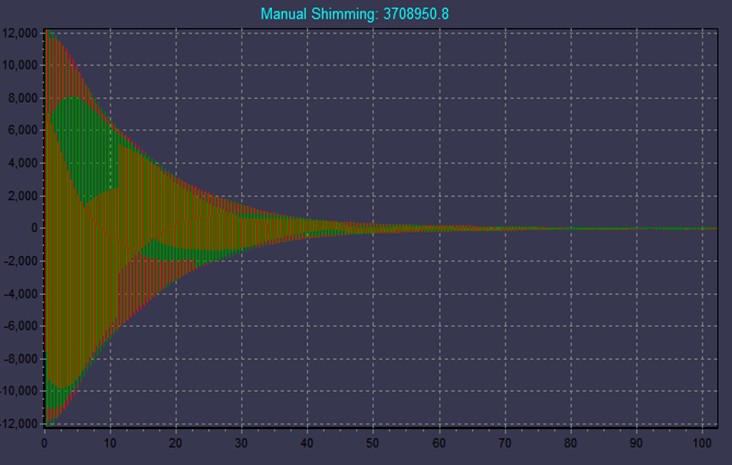En la búsqueda de comprender la intrincada dinámica de los materiales a nivel molecular, Resonancia magnética nuclear (RMN) La prueba del tiempo de relajación surge como una técnica analítica fundamental.. Este sofisticado método aprovecha los principios de la espectroscopía de RMN para medir la desintegración de la inducción libre. (DEFENSOR) Señal de los espines nucleares después de que se han invertido y están volviendo al equilibrio., Revelando dos tiempos críticos de relajación.: T1 (celosía giratoria) y T2 (girar-girar).
Relajación T1:
T1, o el tiempo de relajación de la red de espín, Es el período requerido para que los espines nucleares disipen energía de los niveles de energía superiores a los inferiores.. Sirve como indicador de las interacciones entre los núcleos atómicos dentro de un material., A menudo representa la tasa de rotación interna del entorno atómico.. Midiendo T1, Los investigadores pueden obtener información sobre la estructura molecular y la dinámica de una muestra., Lo cual es invaluable en campos que van desde la química y la bioquímica hasta la ciencia de materiales..

Relajación T2:
En cambio, T2, el tiempo de relajación spin-spin, ilustra cómo evoluciona la fase de los espines nucleares con el tiempo. Influenciado por las interacciones entre iones y perturbaciones del campo magnético local en la muestra., T2 refleja las perturbaciones externas experimentadas por los iones.. Este parámetro es crucial para estudiar el movimiento molecular y puede revelar información sobre la conformación molecular y las interacciones de la muestra..

El proceso del experimento de RMN
El proceso de realización de una prueba de tiempo de relajación por RMN implica varios pasos meticulosos.:
1. Preparación de muestras: la muestra, que puede ser un líquido o un sólido que contiene los núcleos de interés para la espectroscopia de RMN, se coloca dentro de una sonda de detección que se coloca en un fuerte campo magnético.
2. Aplicación de pulsos de RF: una radiofrecuencia (RF) legumbres, una onda electromagnética, Se aplica para invertir los espines nucleares dentro de la muestra.. Las características del pulso de RF., como la amplitud, duración, y frecuencia, Se controlan según los parámetros experimentales..
3. Detección de señal de RMN: Una vez que los espines nucleares se invierten y comienzan a regresar a sus niveles de energía más bajos, una señal conocida como caída de inducción libre (DEFENSOR) es detectado por la sonda. La amplitud y la forma de la señal FID son fundamentales para el análisis cuantitativo y cualitativo de los núcleos dentro de la muestra..

Consideraciones para las pruebas del tiempo de relajación de RMN
La realización de pruebas de tiempo de relajación por RMN requiere equipo experimental de alta precisión y capacitación profesional.. El experimento exige un entorno controlado para garantizar la precisión y reproducibilidad de los resultados.. Además, La interpretación de los valores T1 y T2 requiere una comprensión profunda de los principios de RMN y las propiedades específicas del material bajo investigación..
Conclusión
La prueba del tiempo de relajación por RMN es una poderosa herramienta en el arsenal de la investigación científica moderna, ofreciendo conocimientos incomparables sobre la dinámica molecular de una amplia gama de materiales. Midiendo con precisión los tiempos de relajación T1 y T2, Los investigadores pueden desbloquear una gran cantidad de información sobre la estructura molecular., conformación, e interacciones, allanando el camino para los avances en la química, bioquímica, física, y ciencia de materiales.
—
Este artículo está diseñado para ser informativo y atractivo para los lectores interesados en las pruebas del tiempo de relajación por RMN., al mismo tiempo que está optimizado para motores de búsqueda con uso estratégico de palabras clave y una estructura clara..
 mohoso
mohoso